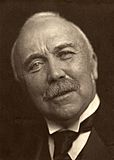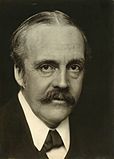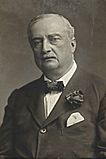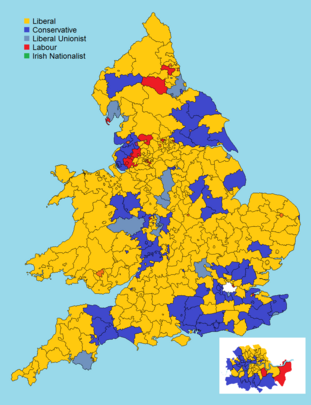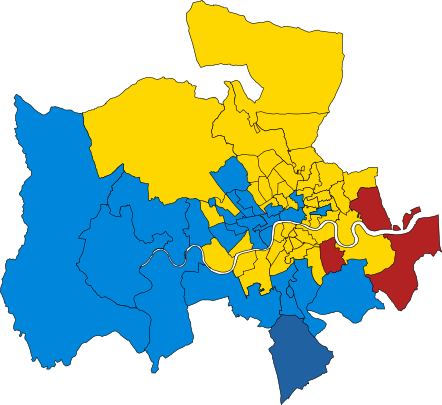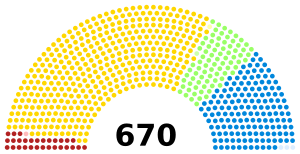1906 United Kingdom general election facts for kids
|
|||||||||||||||||||||||||||||||||||||||||||||||||||||||||||||||||||||||
|
|
|||||||||||||||||||||||||||||||||||||||||||||||||||||||||||||||||||||||
|
All 670 seats in the House of Commons 336 seats needed for a majority |
|||||||||||||||||||||||||||||||||||||||||||||||||||||||||||||||||||||||
|---|---|---|---|---|---|---|---|---|---|---|---|---|---|---|---|---|---|---|---|---|---|---|---|---|---|---|---|---|---|---|---|---|---|---|---|---|---|---|---|---|---|---|---|---|---|---|---|---|---|---|---|---|---|---|---|---|---|---|---|---|---|---|---|---|---|---|---|---|---|---|---|
| Turnout | 83.2% | ||||||||||||||||||||||||||||||||||||||||||||||||||||||||||||||||||||||
|
|||||||||||||||||||||||||||||||||||||||||||||||||||||||||||||||||||||||
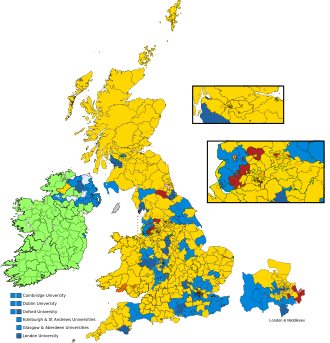
Colours denote the winning party
|
|||||||||||||||||||||||||||||||||||||||||||||||||||||||||||||||||||||||

Composition of the House of Commons after the election
|
|||||||||||||||||||||||||||||||||||||||||||||||||||||||||||||||||||||||
|
|||||||||||||||||||||||||||||||||||||||||||||||||||||||||||||||||||||||
The 1906 United Kingdom general election was a big event in British history. It took place from January 12 to February 8, 1906. This election decided who would be in charge of the country.
The Liberals, led by Prime Minister Henry Campbell-Bannerman, won a huge victory. They gained many more seats than any other party. The Conservatives, led by Arthur Balfour, lost more than half their seats. Even their leader, Arthur Balfour, lost his own seat!
This election was called the "Liberal landslide" because of how many seats the Liberals won. It was one of the biggest election wins ever in the UK.
The Labour Representation Committee also did much better than before. After this election, they changed their name to the Labour Party. They ended up with 29 Members of Parliament (MPs), and Keir Hardie became their leader. The Irish Parliamentary Party, led by John Redmond, also won many seats. This was partly because 73 of their candidates ran without anyone opposing them.
This election was a major defeat for the Conservative Party and their allies. One main reason was a big disagreement within their party about trade rules. This led to new laws called the Liberal reforms, which helped many people. This was the last time the Liberals won so many seats on their own. It was also the last election where neither the Labour nor Conservative parties won the most votes overall.
Contents
What Happened in the 1906 Election?
A group of parties, mainly the Conservatives and Liberal Unionists, had been running the UK since 1895. Arthur Balfour was the Prime Minister from 1902. But his government became very unpopular. He decided to resign on December 5, 1905.
Balfour hoped that if the Liberals took over, they would start fighting among themselves. This would then help the Conservatives win the next election. But the new Liberal government decided to act quickly. They called for an election just one month later, on January 12, 1906. This led to a huge loss for the Conservatives.
Why Were the Conservatives Unpopular?
The government before 1906 had big arguments about free trade. This means allowing goods to be bought and sold between countries without extra taxes. This argument made the government very unpopular. Joseph Chamberlain even quit the government in 1903. He wanted to add taxes to imported goods to protect British businesses.
The Liberal Party believed in free trade. They said it would keep prices low for everyday items. The debate became known as "Big Loaf, Little Loaf." The Liberals argued that under their rule, people would have a "big loaf" of bread because food would be cheaper. Under the Conservatives, they would have a "little loaf" because prices would go up. They even made posters warning people about higher food prices.
The Boer War also made the Conservative government unpopular. The war in South Africa lasted much longer than expected. People also found out about camps where many people died due to poor conditions.
The war also showed how unhealthy many people in the country were. More than 40% of people trying to join the army were too unhealthy to serve. In Manchester, 8,000 out of 11,000 recruits were turned away. A study in York in 1902 showed that almost one-third of people lived in poverty. This made many people demand social reforms to help the poor.
Prime Minister Arthur Balfour was also blamed for "Chinese Slavery." This was about using Chinese workers in South Africa who were forced to work under harsh conditions. Many people thought this was wrong. Working-class people also worried that these jobs could have gone to unemployed British workers.
Many Nonconformists (Protestants who were not part of the Church of England) were angry. The Conservatives passed the Education Act 1902. This law meant that local taxes would help fund religious schools, including Anglican ones. Many Nonconformists refused to pay these taxes. This issue played a big part in the Liberal victory. Another law, the Licensing Act 1904, also upset many people. It aimed to reduce the number of pubs but would pay money to pub owners whose licenses were taken away. Many people who supported the temperance movement (which wanted to reduce alcohol use) called it a "brewers' bill."
Results
-
England and Wales seat winners
| Candidates | Votes | ||||||||||
|---|---|---|---|---|---|---|---|---|---|---|---|
| Party | Leader | Stood | Elected | Gained | Unseated | Net | % of total | % | No. | Net % | |
| Liberal | Henry Campbell-Bannerman | 528 | 397 | 223 | 9 | +214 | 59.3 | 48.9 | 2,565,644 | +3.9 | |
| Conservative and Liberal Unionist | Arthur Balfour | 557 | 156 | 5 | 251 | −246 | 23.3 | 43.4 | 2,278,076 | −6.8 | |
| Labour Repr. Cmte. | Keir Hardie | 50 | 29 | 28 | 1 | +27 | 4.3 | 4.8 | 254,202 | +3.6 | |
| Irish Parliamentary | John Redmond | 84 | 82 | 6 | 1 | +5 | 12.2 | 0.6 | 33,231 | −1.2 | |
| Ind. Conservative | N/A (Russelites) | 9 | 2 | 2 | 0 | +2 | 0.3 | 0.5 | 26,183 | ||
| Ind. Labour Party | N/A | 7 | 1 | 1 | 0 | +1 | 0.2 | 0.4 | 18,886 | ||
| Social Democratic Federation | H. M. Hyndman | 8 | 0 | 0 | 0 | 0 | 0.4 | 18,446 | |||
| Ind. Conservative | N/A | 9 | 1 | 1 | 0 | +1 | 0.2 | 0.3 | 15,972 | ||
| Scottish Workers | George Carson | 5 | 0 | 0 | 0 | 0 | 0.3 | 14,877 | +0.2 | ||
| Free Trader | John Eldon Gorst | 5 | 0 | 0 | 0 | 0 | 0.2 | 8,974 | |||
| Independent Liberal-Labour | N/A | 1 | 1 | 1 | 0 | +1 | 0.2 | 0.1 | 4,841 | ||
| Independent | N/A | 3 | 0 | 0 | 0 | 0 | 0.1 | 3,806 | |||
| Independent Nationalist | N/A | 3 | 1 | 0 | 0 | 0 | 0.2 | 0.0 | 1,800 | ||
| Independent Liberal | N/A | 3 | 0 | 0 | 1 | −1 | 0.0 | 1,581 | |||
| Ind. Liberal Unionist | N/A | 1 | 0 | 0 | 0 | 0 | 0.0 | 153 | |||
Electorate: 7,264,608 (6,347,660 in contested seats)
Turnout: 83.2%
Voting Summary
| Popular vote | ||||
|---|---|---|---|---|
| Liberal | 48.90% | |||
| Conservative and Liberal Unionist | 43.42% | |||
| Labour Repr. Cmte. | 4.85% | |||
| Irish Parliamentary | 0.63% | |||
| Others | 2.20% | |||
Seats Summary
| Parliamentary seats | ||||
|---|---|---|---|---|
| Liberal | 59.25% | |||
| Conservative and Liberal Unionist | 23.28% | |||
| Irish Parliamentary | 12.24% | |||
| Labour Repr. Cmte. | 4.33% | |||
| Others | 0.90% | |||
See also
- List of MPs elected in the 1906 United Kingdom general election
- Parliamentary franchise in the United Kingdom 1885–1918
- Education Act 1902
- 1906 United Kingdom general election in Ireland


